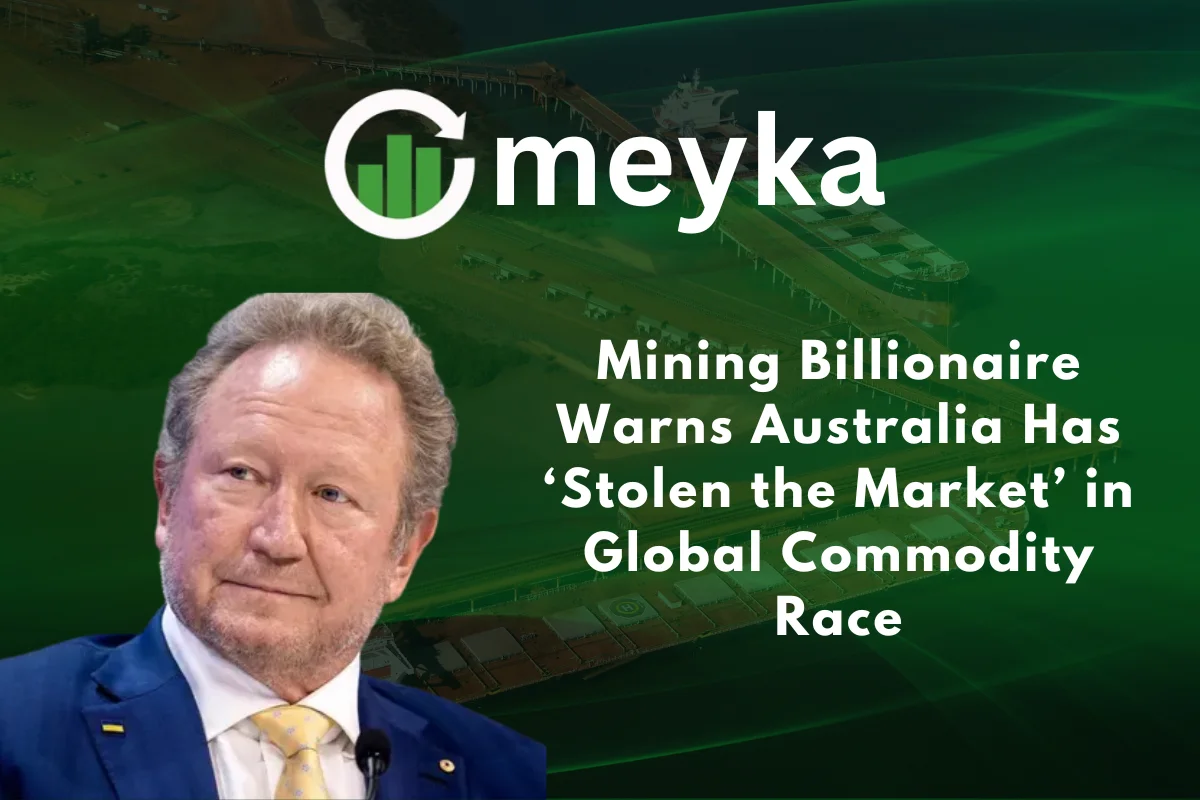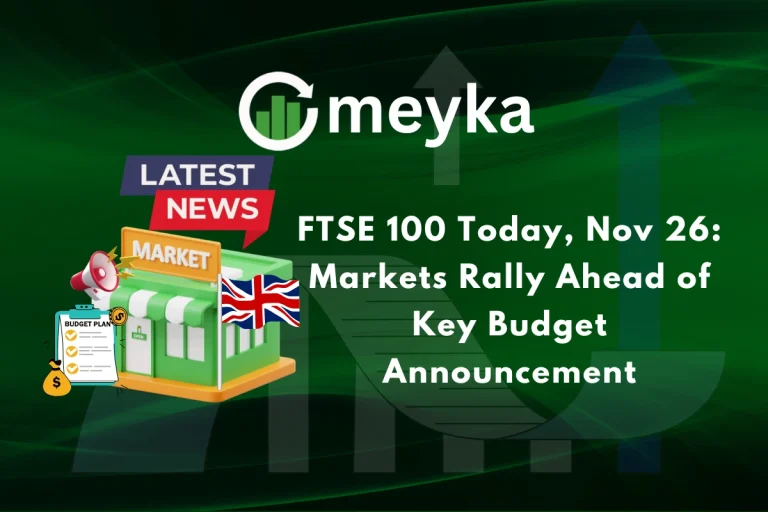Mining Billionaire Warns Australia Has ‘Stolen the Market’ in Global Commodity Race
In recent weeks, the renowned Australian resource magnate Andrew Forrest has issued strong remarks warning that Australia risks having “stolen the market” in the global commodity race. His concerns reflect shifting global supply dynamics and the deep ways the mining sector is influencing the broader stock market, commodity flows and investor sentiment, especially in a time when traditional mining intersects with themes like clean energy and AI-enabled supply chains.
What the Warning Means
Forrest, who chairs Fortescue Metals Group (FMG), has long been a central figure in Australia’s mining industry and has expressed frustration that Australia may be missing new chances in the commodity boom by relying too much on old strengths. His contention is that while Australia remains a mining powerhouse, other nations are creeping into global supply chains and Australia must act decisively or risk falling behind.
Although his exact phrase “stolen the market” was used in the context of manufacturing and mining competitiveness rather than literal theft, the implication is clear: Australia’s dominance may be under threat unless the sector adapts rapidly.
Australia’s Mining Sector: Strengths and Vulnerabilities
The mining sector in Australia has long been an engine of exports, especially for iron ore, coal, lithium, nickel and other key minerals. The country’s rich endowment and established infrastructure have made it a global leader.
But Forrest’s warning highlights growing vulnerabilities:
- Other countries, especially in Asia and Africa, are ramping up production of critical minerals and lower-cost operations.
- Australia faces higher cost bases, labour, and regulation compared to emerging producers.
- The global commodity cycle is shifting toward minerals tied to electric vehicles, batteries, and renewable energy, sectors where mining is intertwined with tech and stock research for “future-facing” industries.
- Investors now look at mining not just as raw material extraction but also as part of a complex ecosystem involving data, AI, supply chains, and sustainability.
Global Commodity Race and Market Impacts
Forrest’s warning comes at a time when the stock market and commodity markets are closely watching the race for critical minerals. For example, mineral-rich nations are positioning themselves for the next era of demand tied to green technology and AI-enabled infrastructure. These shifts mean that traditional mining stocks are evolving, while new players are emerging.
For investors conducting stock research, this is important. Mining companies are no longer just about raw extraction; they are linked to themes like AI in resource optimisation, sustainable supply chains, and global demand shifts. This means mining stocks can no longer be assessed purely by ore price and output; they must also be evaluated for innovation, cost structure, regulatory exposure, and market positioning.
Australia’s role is particularly significant because it has the resources and history. But as Forrest warns, being complacent isn’t good enough.
Why “Stolen the Market” Resonates
The phrase carries two key meanings:
- Complacency Risk: That Australia might assume leadership forever and thus lose urgency to innovate or reorganise the sector.
- Competitive Encroachment: Other countries might be “stealing” market share by building lower-cost mines, offering favourable terms, or aligning with emerging supply chains tied to batteries and EVs.
Forrest’s remarks remind government and corporate leaders that mining must transform. In Australia, this may mean smarter regulation, investment in processing rather than just extraction, linking mining to higher-value segments (battery manufacturing, rare earth processing) and aligning with new global demand patterns.
Investor Take-Aways: Mining and Stock Market Implications
From the point of view of investors and analysts:
- When a major industry leader like Andrew Forrest raises an alarm, it signals potential structural shifts. Mining stocks may need to be evaluated for whether they are aligned with the next cycle or tied to fading resources.
- The race for critical minerals means mining companies must reinvent themselves. Stocks tied to raw bulk commodities (like coal or standard iron ore) may face headwinds, while those linked to lithium, nickel, cobalt, rare earths, or processing have a growth narrative.
- The mining sector intersects with broader technology themes: AI-enabled supply chains, green mining, and processing technologies. This makes mining part of the “future-facing” conversation alongside other AI stocks.
- Geography and policy matter. Australia has advantages but also some costs and regulatory burdens. Investors should watch how mining companies respond to competition from other jurisdictions and how they invest in downstream value-added rather than just exporting raw ore.
What Australia Could Do to Protect Its Edge
Forrest and others suggest several paths:
- Increase investment in advanced processing and manufacturing tied to minerals rather than only mining and exporting raw ore.
- Streamline regulation and costs so that Australia remains internationally competitive in mining and commodity-related sectors.
- Embrace innovation in mining operations – digitisation, automation, AI, and sustainability – to reduce cost and increase resilience.
- Focus on new minerals that drive the green economy, ensuring Australia doesn’t lose ground in the new commodity race for batteries, electric vehicles and sustainable infrastructure.
The Broader Global Context
Around the world, other countries are aggressively entering mining and mineral processing. Australia’s traditional dominance is being challenged.
The commodity cycle is no longer only about raw materials like iron ore and coal. It is now about strategic minerals, the circular economy, green energy, and how mining integrates with the tech world. The stock market reflects this. Mining companies that adapt may benefit from higher investor interest tied to growth narratives. Those that don’t adapt risk being deemed legacy players.
Conclusion
In short, mining billionaire Andrew Forrest’s warning carries a powerful message. Australia may have long held a dominant position in global mining, but the landscape is changing. The commodity race now involves technology, value-added processing, sustainable practices and fierce global competition. To avoid having the market effectively “stolen” from it, Australia’s mining sector must evolve.
For investors watching mining stocks and conducting stock research, the key takeaway is this: evaluate not just the resources but the strategy. How is the company positioning for the future, for new minerals, for value-added processing? That will determine success in the evolving global commodity race.
FAQs
Forrest used the phrase metaphorically to warn that Australia may be losing its competitive edge in the global commodity race. He suggested that other countries are capturing market share and that Australia must innovate and adapt to avoid being overtaken.
The warning signals structural change in the sector. For investors, it means mining stocks need to be evaluated based not only on raw output and commodity prices, but also on innovation, cost competitiveness, value-added processing, and alignment with green economy trends. Companies stuck in legacy models may face headwinds.
Key minerals include lithium, nickel, cobalt, rare earths, copper and other battery/EV-related resources. In addition, downstream processing, manufacturing, clean-energy linkages and technology adoption are trends that matter. Australia needs to focus on these if it is to maintain its market position.
Disclaimer:
The content shared by Meyka AI PTY LTD is solely for research and informational purposes. Meyka is not a financial advisory service, and the information provided should not be considered investment or trading advice.






